Epic Revival: GM’s 50 Millionth Car Rides Again
Though restorers hold otherwise, immortality lies beyond the reach of ordinary automobiles. Of course, for every hard and fast rule there is an exception. Tip your hat to the recreation/revival/return of the 50-millionth car built by General Motors—this “Golden” 1955 Chevrolet Bel Air sport coupe.
Seventy years ago, GM was the world’s largest industrial enterprise. On November 23, 1954, the city of Flint, Michigan, where GM was founded, closed schools and halted traffic to host a mile-long parade called the Golden CARnival, boasting nine brass bands, 18 floats, and 72 noteworthy GM vehicles. An estimated 200,000 spectators cheered GM’s success and their own good fortune.
- First GM production car—1908 Cadillac
- 1-millionth GM car—1919 Oldsmobile
- 5-millionth GM car—1926 Pontiac
- 10-millionth GM car—1929 Buick
- 25-millionth GM car—1940 Chevrolet
The star of the CARnival was GM’s 50-millionth production car—a gold-painted 1955 Chevy Bel Air two-door hardtop. Barely an hour before the start of the parade, employees at Chevrolet Flint Assembly lowered this car’s body onto a gold-painted chassis while company president Harlow Curtice blessed the marriage. All the interior and exterior trim parts, including front and rear bumpers, were gold-plated!
Turns out that the Golden ’55 was in fact three distinct automobiles. Car number one, assembled a month in advance of the parade, was used in period publicity photos. It also starred at the five Motorama shows GM hosted in 1955 before being sold to some lucky customer.
Thirty-some years ago, that car was tracked down to a North Carolina owner who had no interest in selling, or even talking, about it. Unfortunately, this Bel Air was destroyed in a garage fire in 1996. The owner chopped the burned body into several pieces, scattering them about his property. Last summer, the charred remains, some of which were gold-plated, were purchased by Joe Whitaker of Real Deal Steel (RDS), an enterprise in Sanford, Florida that, last April, began creating the tribute vehicle shown here.
The second Golden ’55 Chevy, also built in October 1954, starred in a GM film entitled Achievement U.S.A. It hasn’t been seen since, and its whereabouts are unknown.
Car three was the ’55 Chevy assembled in November 1954 which rode atop a float in the Golden CARnival parade. Regrettably, this actual 50-millionth car has also been lost to the ages.
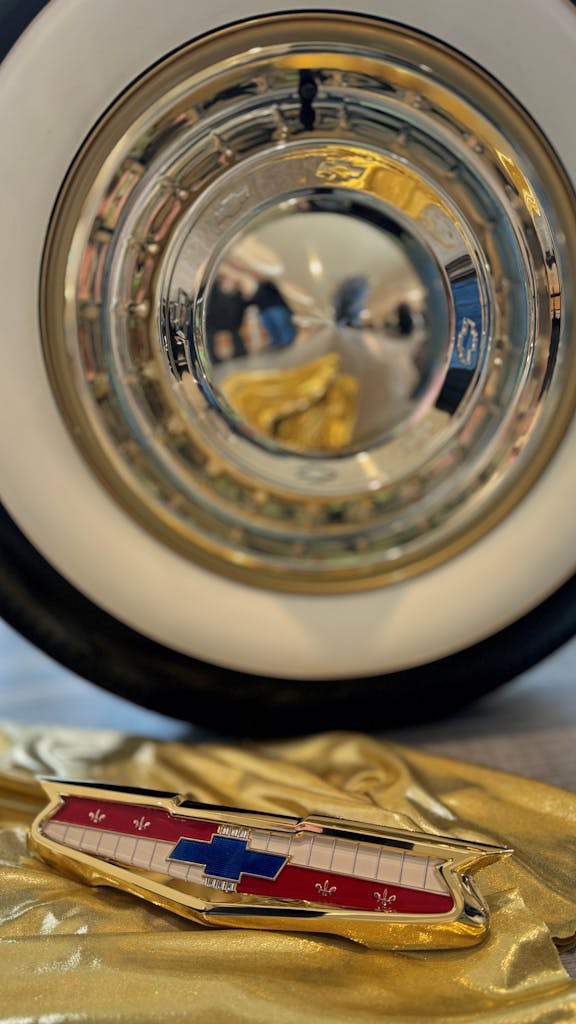
Immortality is not beyond the reach of the truly resourceful car enthusiast, however. Proof comes from the RDS enterprise founded in 2011 by Joe Whitaker and Randy Irwin, two of the most dedicated revivalists in collector car history. Over the past decade, they’ve sold hundreds of their products—1955–57 Chevrolets, 1967–69 and 1970–81 Camaros and Firebirds, plus various Chevy IIs and Novas—in the form of brand-new steel bodies to restorers who won’t be stopped in their pursuits.
Rather than starting with a donor Chevy built by GM, the gents at RDS began this project with spanking new electrophoretic-painted steel panels provided by their primary sponsor Golden Star Classic Auto Parts of Lewisville, Texas. Golden Star is the uncontested leader in the manufacture of fresh, top-quality sheetmetal replicating American and VW classics. Headquartered in Texas, they’re backed by a Taiwanese arsenal of CAD/CAM technology, stamping dies, and metal presses. This firm also supplied the new steel frame underlying the Golden 1955 Chevrolet Bel Air.
Paul Hsieh, who founded Golden Star and is now 58 years old, began working in a Taiwanese stamping plant as a young man before immigrating to Georgia where he spent eight years at Goodmark Industries, a leading restoration parts house. He began Golden Star in 2003. He explains how a fresh car body is manufactured from flat sheet steel:
“We start by shipping a complete vehicle to Taiwan. A plaster mold is made for each part before the original donor body is cut apart. A second mold is created after that piece is removed from the donor vehicle. Both plaster castings are digitally scanned and the two images are compared in software. Subtle human interpolations yield one final smooth, symmetrical design.
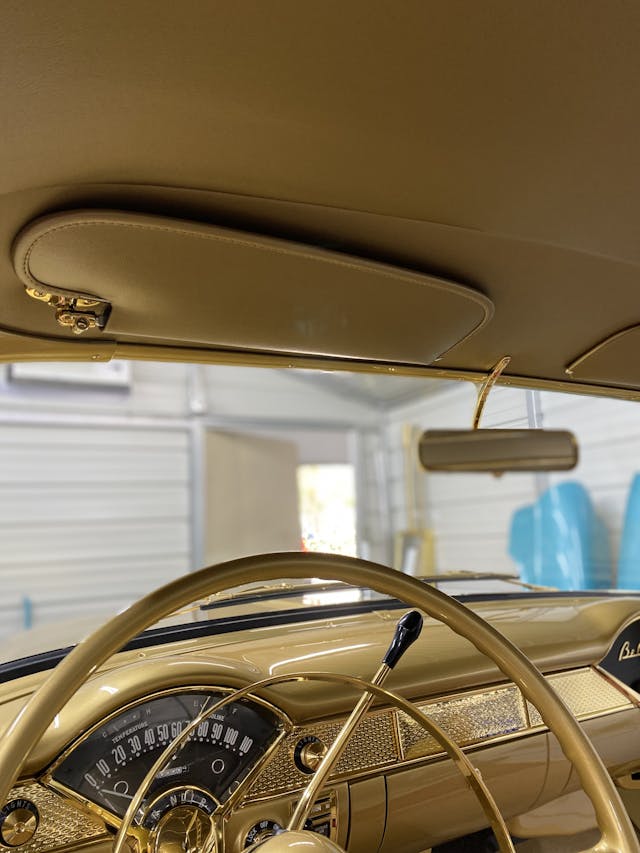
“That scan data is used to create a full-size foam model of each part. Next, we convert the foam model to a sand casting. Molten steel poured into the casting becomes a stamping die after all its surfaces are milled (using scan data) and hand-polished.
“The typical die set consisting of a male component, a female piece, and a top hat to hold the steel sheet in place for forming weighs 7000 to 8000 pounds. To achieve the desired final shape, multiple press strokes are required. The typical fender takes three to four hits requiring nine to 12 separate dies. Some of our larger presses are two to three stories tall. Excess metal is trimmed after stamping by means of a laser [that is] guided by the digital data file.
“Stretching a flat sheet into a curved, final car panel increases both strength and rigidity. Before we commence volume production, we ship prototype parts to end users to confirm perfect fits. If necessary, die adjustments are made to achieve perfection before we begin manufacturing parts for sale.
“We also supply restorers with steel frames, chrome-plated bumpers, complete glass kits, fuel tanks, door handles and latches, and heater boxes.’
Given this painstaking process and the effort required to assemble panels into a complete body, it’s easy to see how RDS charges $21,150 for a 1955 Chevy body shell fitted with doors, decklid, and dash.

The cadre of other contributors to the cause of the Golden ’55 Chevy include Shafer’s Classic Reproductions, American Autowire, Gene Smith Parts, Auto City Classic, and Ciadella Interiors.
All told, more than 4000 hours of effort and several hundred thousand dollars were invested into the project.
Snodgrass Chevy Restorations of Melbourne, Florida, handled assembly, fitting, and painting of the new body. Steve Blades of Falmouth, Kentucky, served as the project’s historian and researcher, gathering 300 period photos from GM’s Heritage Center, the Sloan Museum of Discovery in Flint, Michigan, and several private sources. He plans on documenting this 10-month restopalooza in a coffee table book.
Snodgrass personnel constructed a new chassis carrying a 265-cubic-inch (4.3 liter) V-8 engine rated at 162 (gross) horsepower, a two-speed Powerglide automatic transmission, and a 3.55:1 rear axle. Tires are 6.70×15 US Royal bias plies from Coker Tire. Instrument panel, steering column, and steering wheel parts are original GM. Interior trim is new old stock (NOS). Nearly a thousand enthusiasts followed the recreation project on Facebook.

The paint used here is a custom Axalta mix logically dubbed Tribute Gold. The finish consumed 5.5 gallons of paint costing $1200 per gallon. The list of 24-karat gold-plated parts includes interior and exterior trim, ID badges, both bumpers, the grille, wheel covers, and over 100 nuts, bolts, and screws. The plating tab alone topped $100,000!
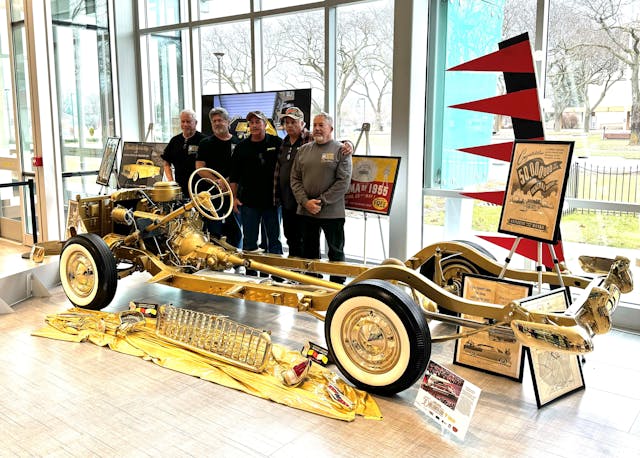
Last December, a few weeks before the Golden body was finished, its chassis was unveiled at the Sloan Museum along with notable memorabilia and salvaged debris from the original Motorama ’55 Chevy. A grander reveal will occur at the 71st Detroit Autorama scheduled for March 1–3 this year at the Motor City’s Huntington Place convention center.
Steve Blades notes, “We believe that our Golden ’55 Chevy Bel Air Sport Coupe needs to be seen and enjoyed by the public at large on a daily basis. The ultimate goal is for it to be housed at either the GM Heritage Center in Grand Blanc, the Henry Ford Museum in Dearborn, or the Sloan Museum of Discovery in Flint.”
Yes, indeed: Homing in on this immortal ’55 Chevy would be well worth your time.
***
Check out the Hagerty Media homepage so you don’t miss a single story, or better yet, bookmark it. To get our best stories delivered right to your inbox, subscribe to our newsletters.
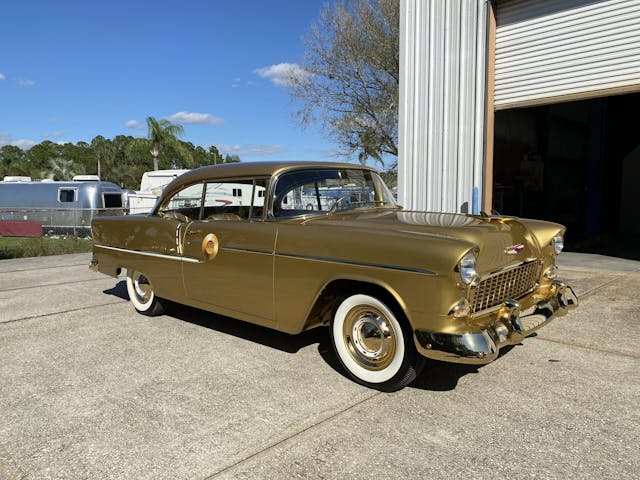
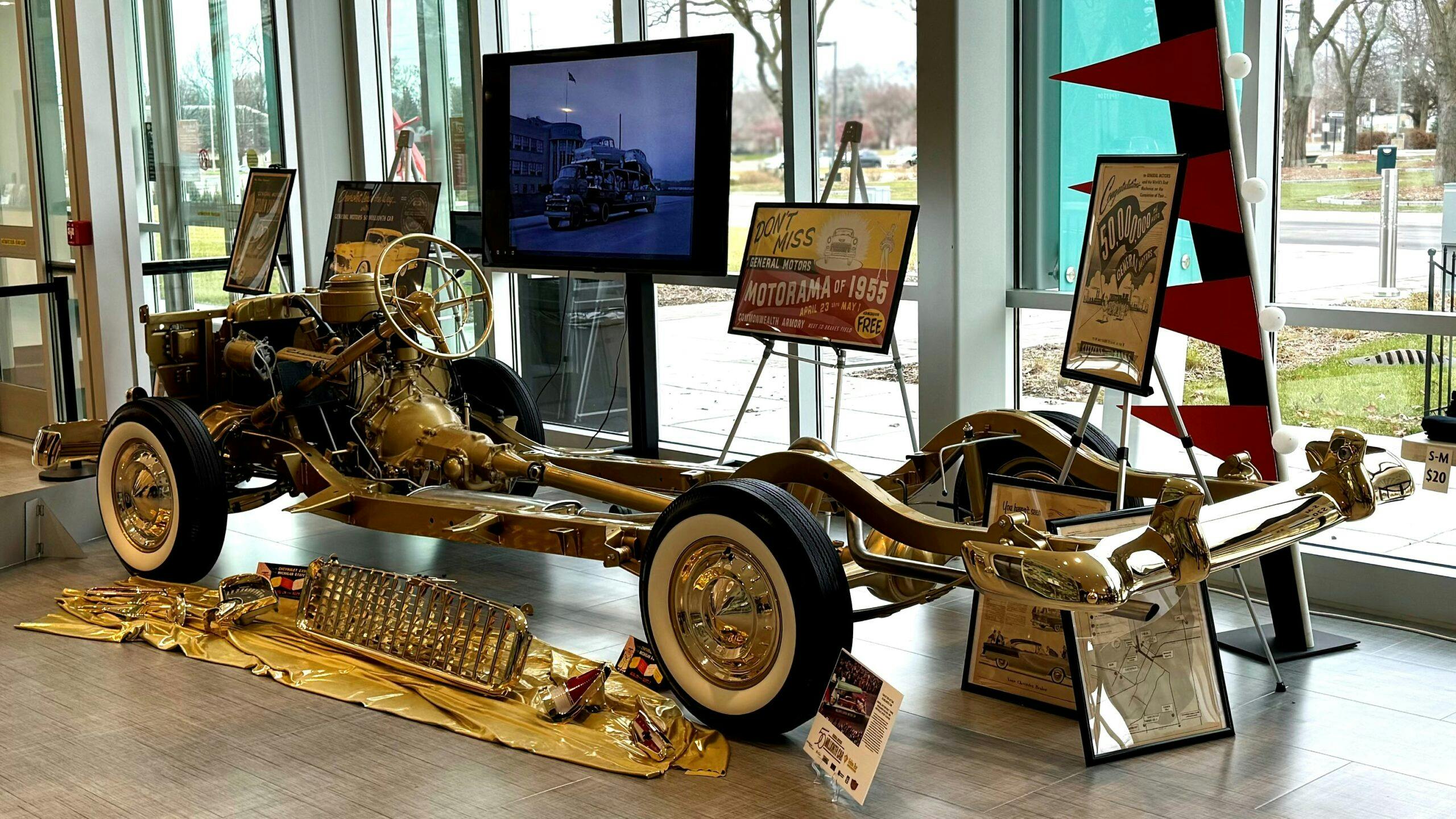
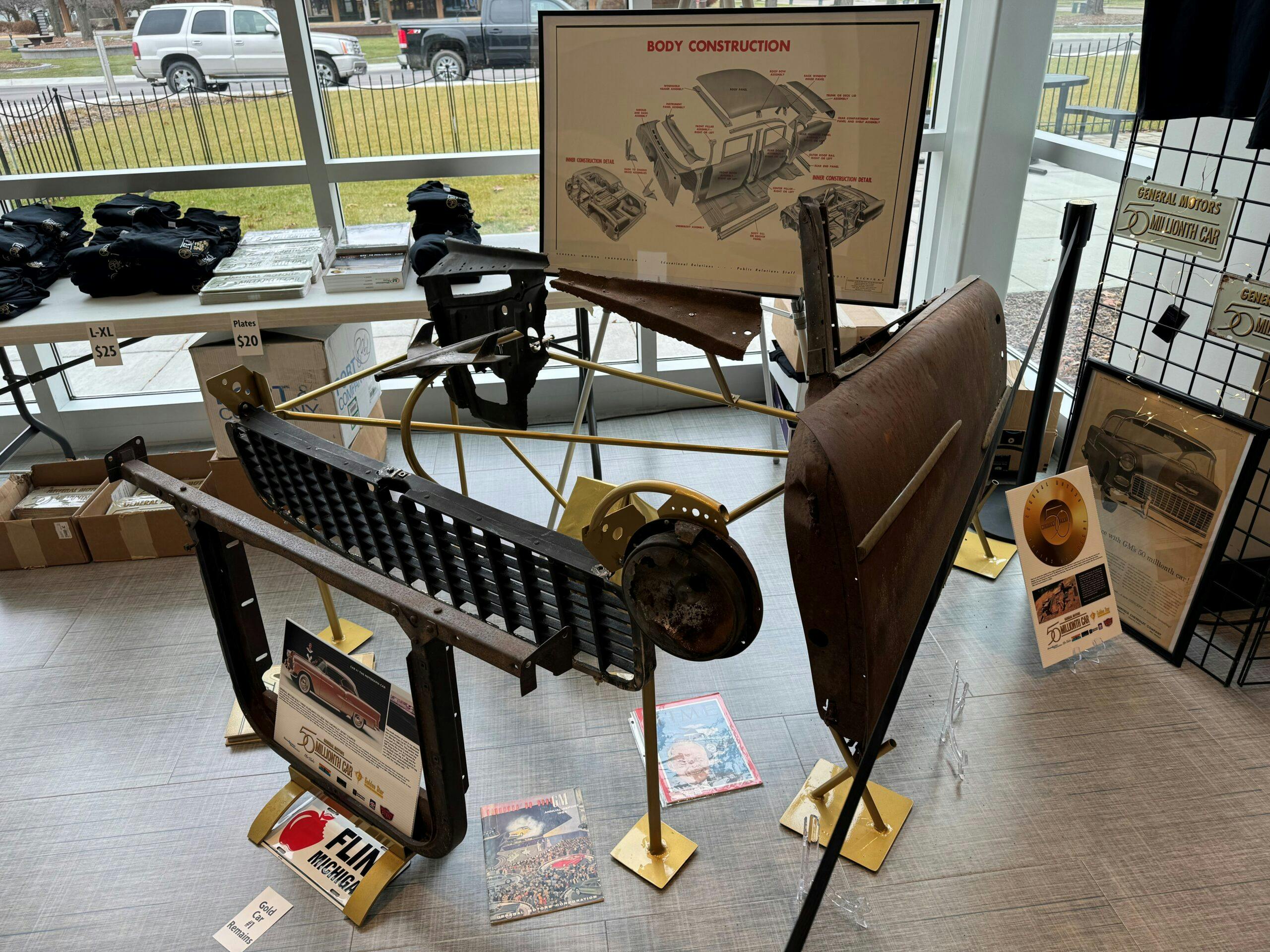
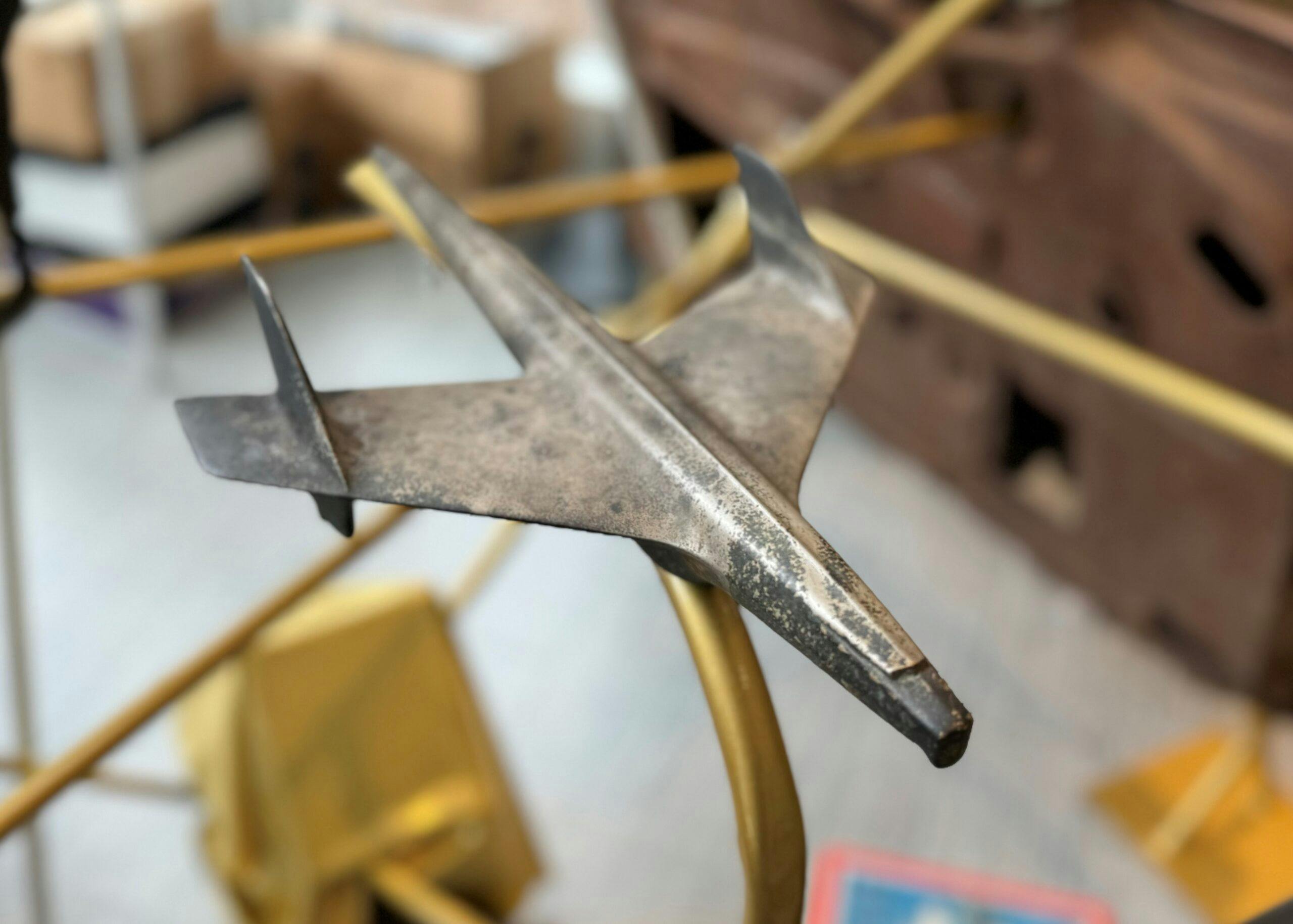
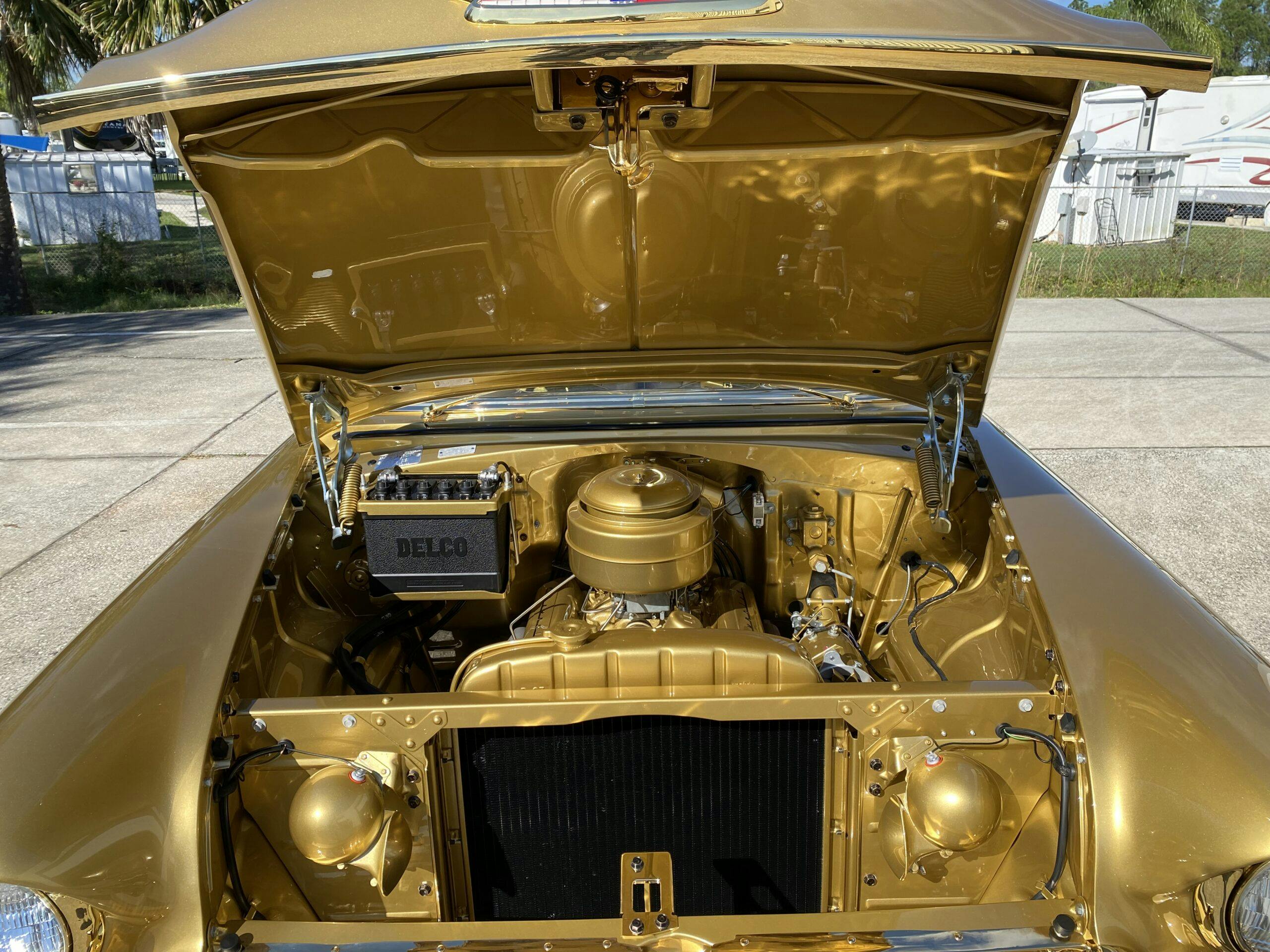
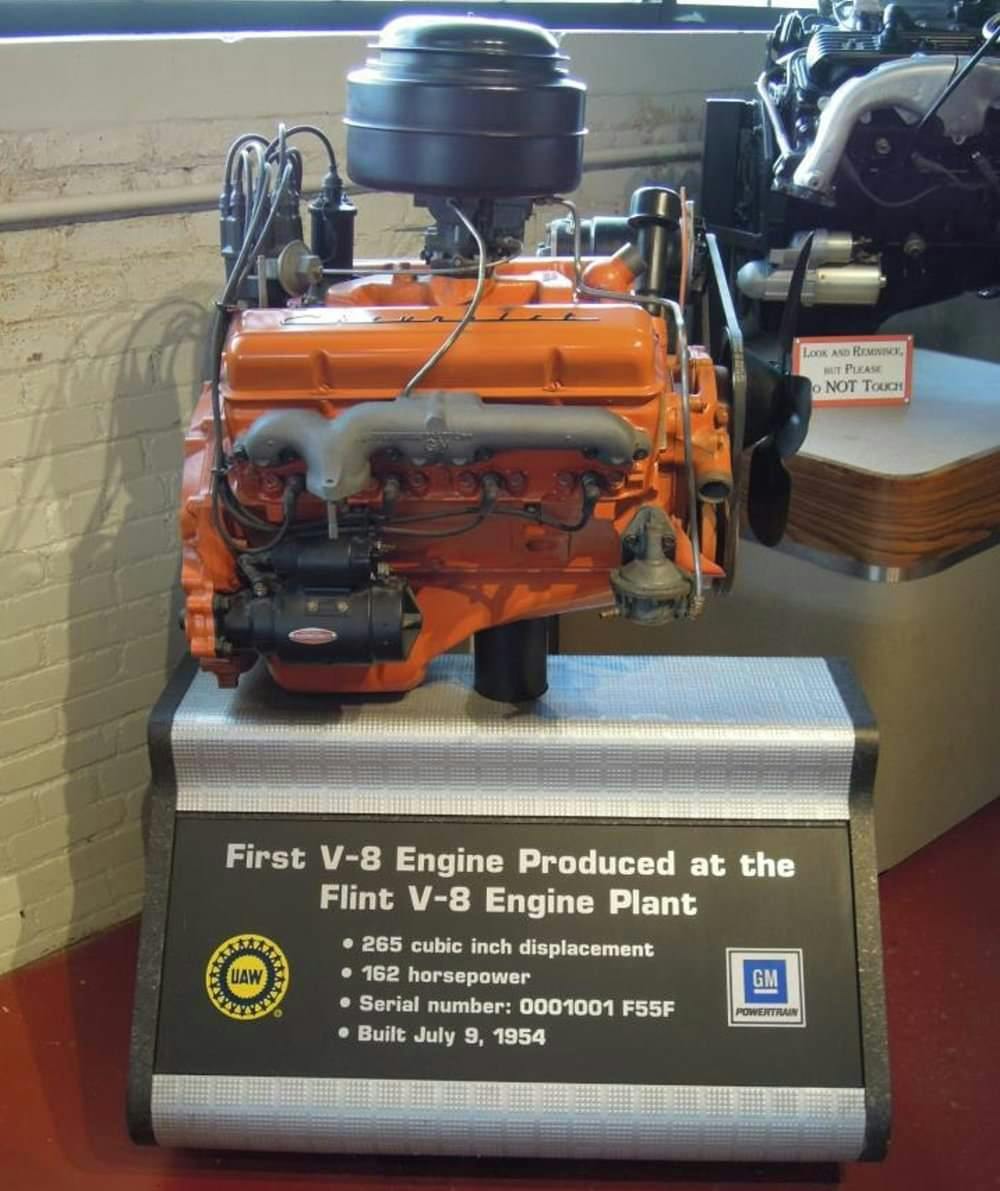


I’m going to step up (without a protective shield) and say I think this is dumb. Don’t get me wrong – I’m a huge fan of ’55 Chevys. But this one cost maybe $300K, is mostly a repro, and won’t be driven on weekends to take a family for a drive. You gonna put a star wrench on one of those lugnuts? Plus, with a bunch of 24K gold plate, it probably is going to require an armed guard. My point? How is this thing useful in any way, shape or form?
I’m gonna hide behind your shield and agree with you. 🙂
I hear you. History now records 4 golden 50 millionth ’55 Chevys. None of which were the 50 millionth car actually built. I guess as a Canadian who respects the American way of life I will admit that we all succumb to great marketing. The ’55 is an iconic auto and we all have a favorite. This one is pretty but I’ll take the primer and M22 whine of the Two Lane car any day.
The one is the 50 millionth car
It’s only dumb because you can’t afford to build it.
It’s cool. Two of the cars we don’t know what happened, they may exist or may be lost forever. Someone with the passion and financials to build one did, to commemorate the very existence of these cars. And you cry. Pitiful.
It’s a tribute to a bygone era.
A bygone era when everyone drove around in gold-plated cars? Nah. I lived in that era, and those cars were just grocery getters. Plain old, everyday take-me-to-work family cars. If you want to create a “tribute” to that era, make a realistic reproduction of what one would find on the showroom floor. This thing looks like it goes on the top of a show car trophy.
Just my opinion – your mileage may vary…
Well done! A beautiful tribute to the Tri-Fives and GM’s market dominance in the 1950s.
The mostly repro thing bothers me a bit too but, this car is stunning. I’d love own it. What else represents the American Dream better than this? I wish I could have heard the comments at that parade.
It looks good. The video is a short ad to GM, not much about the car in it.
I have George Washington’s ax. The real one that he used to chop down the cherry tree. I’ve replaced the head….and the handle…but it occupies the same space as the original.
No you don’t I do! I use it chop kindling.
I have a brass medallion like the one painted on the side of the car.
Just happened to see it at a second hand store my wife likes and bought it.
Now I know the rest of the story.
Hey, my 55 Chevy 210 4 door sedan, is just like that one. My dash had the radio delete plate too! I guess the build budget didn’t allow for a radio.
It would of had to have been gold too so it would put out “golden oldie hits”
Classics like this can’t be enjoyed the way a car is supposed to be enjoyed. I could perhaps see it’s place if it was the original vehicle, but it doesn’t sound like there is anything from the original car on it — just a tribute. To me it seems like all this would be is nothing more than another piece of art. Hang it on the wall, it’s no longer a vehicle…
Amen.
This is really cool! Too bad so many don’t see what a vehicle like this is about, and only want something they feel they can drive around in.
I don’t want to look to deep into this story. This is more of a American story, A story of the great past gilded age. Sadly that time is over and the American story is reproduced by overpriced Taiwan parts. The great America is gone only thing left is a gold plated car that is useless.
Absolutely. I thought The Company ended with the 2008 bailouts.
What a beautiful car. I had a blue and white two door hardtop back in 1965. Sold it for $60. because the distributor cap would hit the firewall and break. Now I’m building another one, a 55 two door post. It’s black and red and hope to have it on the road by summer.
Be sure to beat the crap out of the firewall with a BFH before dropping the engine in – that’s how we solved the “distributor cap hit the firewall” back in the day (well, and also buying new motor mounts, which usually helped). 😉
I have a 26 Pontiac. Anyone interested in recreating the 5 millionth car?
While this one is over-the-top for my tastes, it brings up fond memories for me. Way back, when I was a wee lad, my Dad bought a 55 Chevy painted Anniversary gold over India Ivory. I haven’t seen one like it since. It was in factory colors, but limited production. I still don’t know how many Chevy produced. My Dad bought it USED with a little over 200 miles from a Ford dealer, which happened to be next door from my home in a Chicago suburb. The back story of how the Ford dealer got the car is a cloudy to me. As a little kid, I wasn’t in on the details, but my Dad had to promise not to divulge the cars origin to anyone. The car was glorious, fully loaded, V/8 powered and fast for the day. It lasted six years before Chicago salted streets caused terminal rust. I dream of buying a beautiful 55, and painting like Dad’s 55. To this day, I haven’t seen one like it.
Mid-fifties dominance? In 1957 Ford outsold Chevy almost two to one. As for this 55 I’ll ask the some question others have asked WHY?
My favorite Ford book says in model-year production Ford sold 170,000 more cars than Chevrolet (1957). A first since 1935.